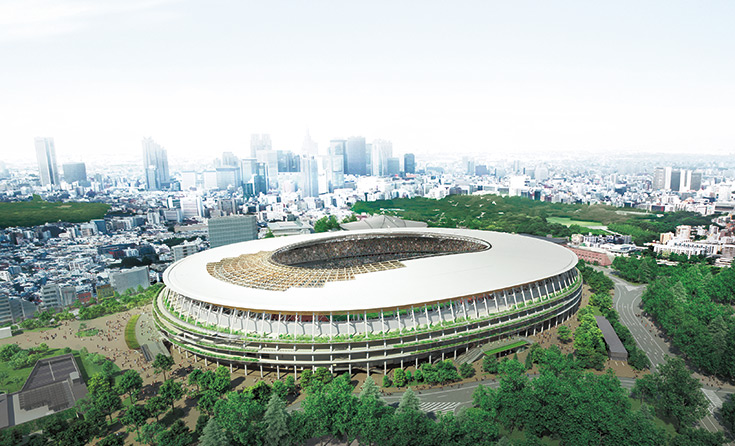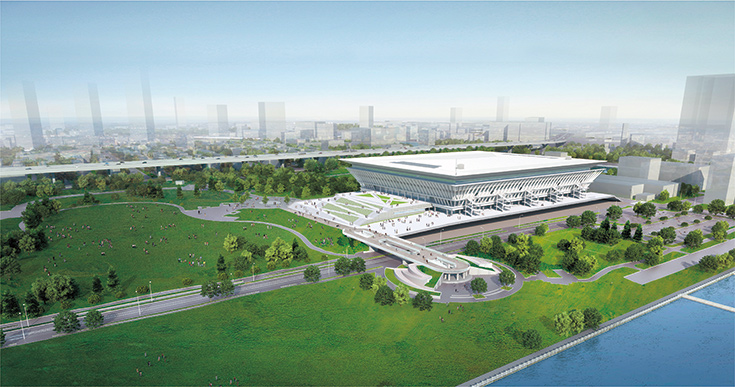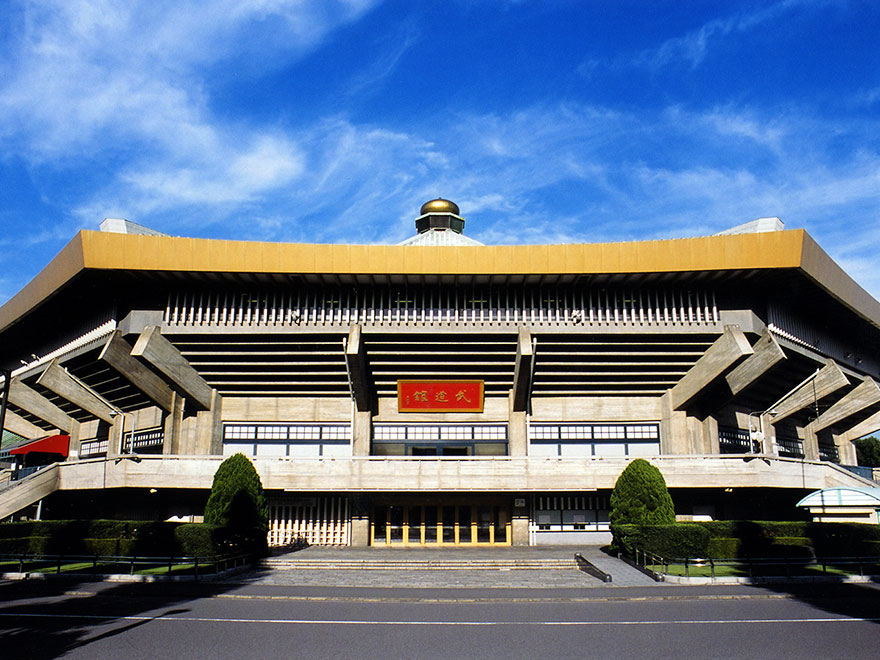niponica is a web magazine that introduces modern Japan to people all over the world.
2019 NO.27
The Olympics Are Coming to Tokyo

The Changing Face of the Olympic Legacy
How has the tangible and intangible legacy of the Olympic Games Tokyo 1964 been passed down to the upcoming Olympic and Paralympic Games Tokyo 2020, and how will it be put to use after the Games are over?
The Revival of a Stage of Passion and Excitement
The Olympic Stadium
1964

The spectacular opening ceremony for the Games of the XVIII Olympiad held on October 10, 1964, in front of approximately 75,000 spectators. The stadium in this photo was the main Olympic venue. It hosted the opening and closing ceremonies, as well as athletics, football, and equestrian events.
(Photo: Aflo)
2020

©Design Works and Construction Works of Taisei Corporation, Azusa Sekkei Co., Ltd., and Kengo Kuma and Associates JV/Courtesy of JSC Note: The renderings are intended to show a conceptual image at completion and may be subject to change. The greenery is a projection of approximately ten years after completion.
The new Olympic Stadium projects the warm ambience associated with wooden structures, and uses updraft natural ventilation to create a comfortable environment for spectators. Universal design is applied to the stadium, from the seating arranged with consideration of a diverse range of users, to the easy accessibility with no differences in floor heights. At Tokyo 2020, the stadium will host the opening and closing ceremonies, as well as athletics and football events, and after the games, it will be used as a venue for sports events.
1964〜2020
The Flagship of Modern Architectural Design in Japan
Yoyogi National Stadium
(Photo: PIXTA)
A symbol of modernism built for the Tokyo 1964 Olympic Games, Yoyogi National Stadium was designed by the master of modern Japanese architecture, Tange Kenzo (1913-2005). The dynamic structure featuring a tensile tent-like suspended roof, a design that is very rare even on a global scale, attracted a lot of attention back in 1964. The 1st Gymnasium (upper left) hosted the swimming events, and the 2nd Gymnasium (lower right) hosted the basketball events. For the Olympic and Paralympic Games Tokyo 2020, however, the Gymnasium will serve as a venue for the Olympic handball events and the Paralympic wheelchair rugby matches and para-badminton events. The Gymnasium underwent refurbishment to improve earthquake resistance, and after the Games it will return to use as a venue for sports events and concerts.
A Sacred Place in Martial Arts and a Legendary Concert Venue
Nippon Budokan
(Photo: Nippon Budokan)
Judo made its debut as an Olympic sport at the Olympic Games Tokyo 1964, and Nippon Budokan was built to host the judo events. Two years after the Olympic Games, Nippon Budokan became the venue for the first concerts in Japan by the Beatles, the world-famous rock band, throwing the entire nation into intense fan frenzy. Since then, Nippon Budokan has gained recognition not only as the spiritual home of martial arts but also as a sacred place for musical concerts. Performing there has been the dream of both Japanese and foreign musicians. For Tokyo 2020 Games, Nippon Budokan will serve as the venue for the judo and para judo events, and the karate events. Currently, it is undergoing renovation work to improve earthquake resistance and secure accessibility.
International Swimming Venue Launches a New Era in the Tokyo Bay Area
Tokyo Aquatics Centre

Artist’s rendition of the venue during the Games (as of January 2019)
Image courtesy of the Tokyo Metropolitan Government
Tokyo Aquatics Centre was newly built to replace Yoyogi National Stadium as the venue for the Tokyo 2020 aquatics events. The Centre will host the Olympic swimming, diving, and artistic swimming events, as well as the Paralympic swimming events. The seating capacity of up to 15,000 spectators will be reduced to 5,000 after the games, and the Tokyo Aquatics Centre will be used as an international swimming venue and a swimming center for the people of Tokyo.






